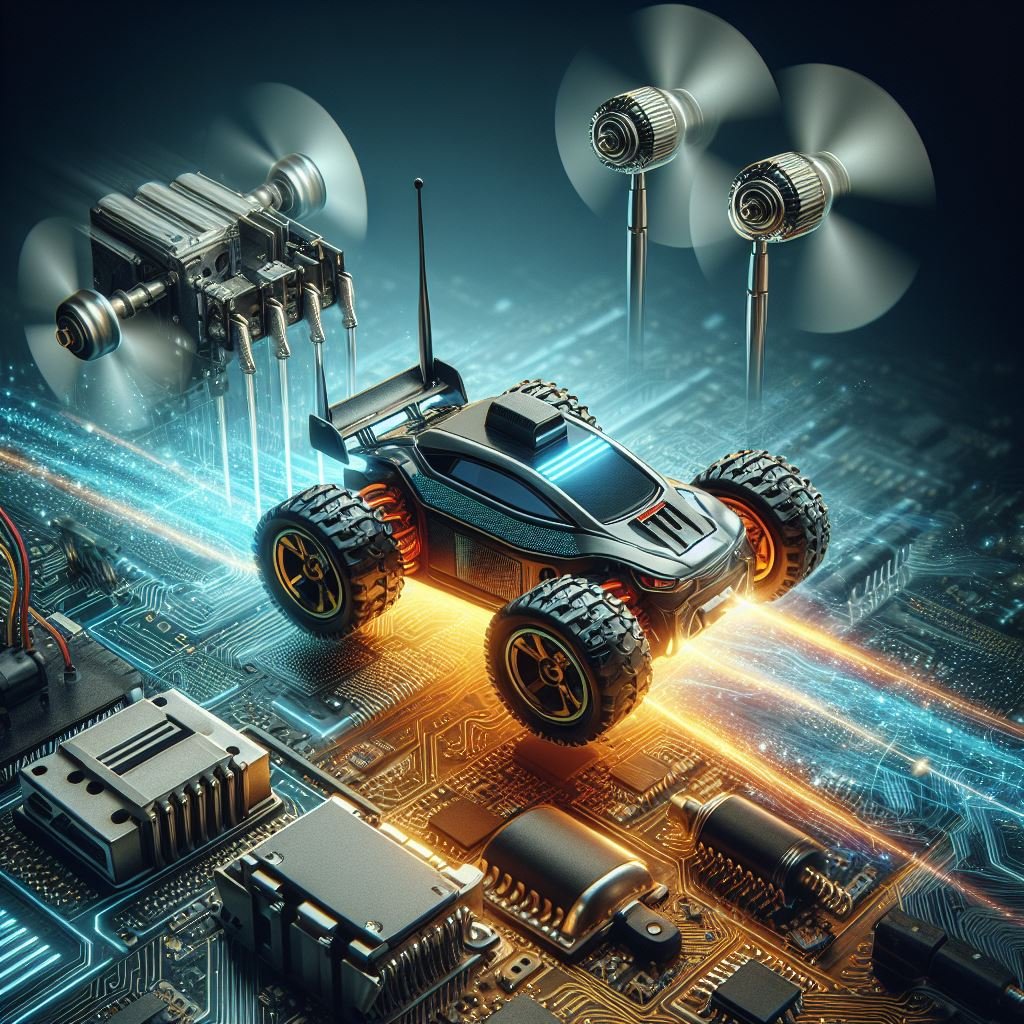In the era of rapid technological advancement, the domain of robotics has emerged as a key frontier, offering innovative solutions to various real-world problems. Among these, wireless robotic cars stand out as versatile tools with applications ranging from education and entertainment to industrial automation and research. Central to the functionality of these robotic marvels are servo motors and DC motors, the dynamic components that drive their locomotion and functionality. In this article, we delve into the intricacies of these motors, exploring their functionalities, applications, and the role they play in shaping the future of robotics.
Understanding Servo Motors: Servo motors are compact yet powerful devices employed extensively in robotics for their precision control and ability to maintain a specific position. These motors consist of a DC motor, a gear train, and a feedback mechanism, typically a potentiometer. The potentiometer provides positional feedback to a control circuit, enabling accurate positioning of the motor shaft.
One of the defining characteristics of servo motors is their ability to rotate within a specific range, typically 0 to 180 degrees, making them ideal for applications requiring controlled movement, such as steering mechanisms in robotic cars. Moreover, servo motors offer high torque at low speeds, ensuring precise and stable movement even under varying load conditions.
Applications of Servo Motors in Wireless Robotic Cars: Wireless robotic cars leverage servo motors for a myriad of applications, including steering control, obstacle avoidance, and camera positioning. In autonomous vehicles, servo motors play a pivotal role in controlling the direction of movement, enabling precise navigation through complex environments.
Furthermore, servo motors are integral to implementing advanced features such as object tracking and gesture recognition in robotic cars. By coupling servo motors with sensors and vision systems, these vehicles can dynamically adjust their orientation and focus, enhancing their versatility and adaptability in diverse scenarios.
Challenges and Future Developments: While servo motors offer unparalleled precision and control, they are not without limitations. One of the primary challenges is their restricted range of motion, typically limited to 180 degrees. This constraint imposes restrictions on the design and maneuverability of robotic systems, especially in applications requiring full rotation.
To address this limitation, researchers are exploring novel approaches such as continuous rotation servo motors and hybrid actuation mechanisms. Continuous rotation servos enable unlimited rotation by modulating speed and direction, expanding the scope of applications for servo-driven robotic systems. Additionally, advancements in materials science and miniaturization techniques are paving the way for more compact and efficient servo motor designs, further enhancing their integration into wireless robotic cars.
Understanding DC Motors: DC motors are ubiquitous in robotics, renowned for their simplicity, reliability, and high torque output. Unlike servo motors, which provide precise positional control, DC motors operate on the principle of continuous rotation, making them ideal for applications requiring smooth and consistent motion.
These motors comprise a stationary stator and a rotating rotor, with electrical current supplied to the rotor through brushes and commutator segments. The interaction between the magnetic fields generated by the stator and rotor produces rotational motion, with the speed and direction controlled by varying the voltage and polarity of the applied signal.
Applications of DC Motors in Wireless Robotic Cars: DC motors find widespread use in wireless robotic cars for propulsion, traction control, and payload manipulation. In propulsion systems, DC motors drive the wheels or tracks of the vehicle, translating electrical energy into mechanical motion. Their high torque output ensures robust performance, allowing robotic cars to traverse various terrains with ease.
Moreover, DC motors play a crucial role in implementing agile maneuvering and dynamic response capabilities in robotic vehicles. By modulating the speed and direction of individual motors, these vehicles can execute complex maneuvers such as turning, drifting, and reversing, enhancing their agility and versatility in dynamic environments.
Challenges and Future Developments: Despite their versatility, DC motors pose certain challenges related to efficiency, reliability, and maintenance. One of the primary concerns is the presence of brushes and commutators, which are prone to wear and generate electrical noise during operation. Additionally, DC motors exhibit limited efficiency at low speeds and may require additional gearing mechanisms to optimize performance.
To mitigate these challenges, researchers are exploring alternative motor technologies such as brushless DC motors (BLDC) and stepper motors. BLDC motors eliminate the need for brushes and commutators, offering improved efficiency, reliability, and lifespan. Furthermore, advancements in motor control algorithms and power electronics enable precise speed and torque control, enhancing the overall performance and efficiency of robotic systems.
Conclusion: Wireless robotic cars represent a convergence of cutting-edge technologies, with servo motors and DC motors serving as the driving force behind their locomotion and functionality. From precision steering and navigation to agile maneuvering and propulsion, these motors enable robotic vehicles to navigate diverse environments and perform complex tasks with ease.
As technology continues to evolve, the integration of advanced motor technologies and control algorithms will further enhance the capabilities and versatility of wireless robotic cars. Whether in educational settings, industrial automation, or research laboratories, these robotic marvels are poised to revolutionize various domains, offering innovative solutions to the challenges of tomorrow.
#WirelessRoboticCars #ServoMotors #DCMotors #RoboticsTechnology #AutonomousVehicles #Innovation #TechTrends #PrecisionControl #AgileManeuvering #FutureTech #RoboticsEngineering #MotorTechnology #EmergingTech #Automation #RoboticRevolution #MOE(MotorsOfExcellence) #SmartMobility #EngineeringInnovation #CuttingEdgeTech #RoboticSystems #amoltechnicalguru

